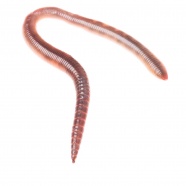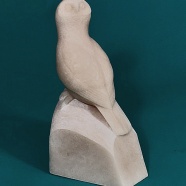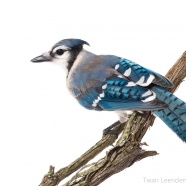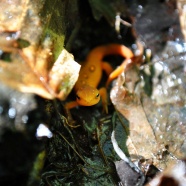Amazing Line-Up For National Invasive Species Awareness Week
Trying to combat cabin fever this winter? Looking for some interesting and educational events to attend? Between February 27th and March 4th, RTPI is partnering with the Western New York Partnership for Regional Invasive Species Management (WNY PRISM) to host a series of events at our Jamestown headquarters in recognition of National Invasive Species Awareness Week. The schedule for the week is as follows: Monday February 27th at 6pm-“Bird and Invasives” Guest Lecture by Andrea Locke, WNY PRISM Coordinator Wednesday March 1st at 6pm-“Earthworms: Friends to Gardens or Foes...
Read MoreArtist Dale Weiler Creates Snowy Owl Sculpture to Benefit RTPI
We are very excited to announce the release of a new bronze sculpture created by Dale Weiler to support wildlife conservation programs underway at RTPI. The bronze, “Elevated Perspective”, is a 9-inch rendering of a snowy owl, one of Peterson’s favorite species to paint and the icon for RTPI. It is also the first bronze Dale has created in the last ten years. Dale and his wife, Loti, are donating 100% of the profits to RTPI’s ‘Project Wild America’ initiative – a program which promotes experiencing nature in your own backyard. The original for the bronze was sculpted from snowy...
Read MoreWinter Blues
Blue Jays (Cyanocitta cristata) can look so vibrantly blue on sunny days, but blue coloration in animals is very rarely created by blue pigment. Instead, their stunning hues are created by refractive colors of light, breaking on microscopic structure of the feathers. Minute barbs on their feathers are specially modified to scatter light in a way that makes them appear blue, rather than showing the brown melanin that their feathers are colored with. Yes, Blue Jays are not actually blue!
Read MoreBrown Thrasher Visit
This Brown Thrasher came to my feeders today! Talk about a welcome visitor…it ended up spending the day eating with various feathered friends, using that long bill to dig seed out of the snow. It was a delightful surprise for one of the more quiet times of the year. Scott Kruitbosch Conservation & Outreach Coordinator
Read MoreDark-eyed Junco
The Dark-eyed Junco (Junco hyemalis) is one of our most familiar backyard feeder birds. They are a species we can find year-round as they nest in some of our woodlands in western New York. They used to be known as the “snowbird” likely because of their abundance in pouring down from the north into all of the continental United States during the winter. Their plumage, grays and browns above with white below, also seem to fit so perfectly on a snowy landscape. This bird was photographed during a recent snowstorm looking regal as can be while living up to its name. Have you ever...
Read MoreNot All Salamanders Are Newts…
If you’re an amphibian enthusiast, you’ve probably heard this phrase at some point: “All newts are salamanders but not all salamanders are newts.” Does trying to make sense of this cause smoke to come out of your ears? You’re not alone. To shed some light on this conundrum, let’s first consider a bit of taxonomy. Within the Class Amphibia there are three Orders: Caudata, Anura, and Gymnophiona. Caudata refers to the salamanders; species that retain their tails as adults and have four legs. These differ from the Anurans (frogs) which lose their tails as...
Read More









